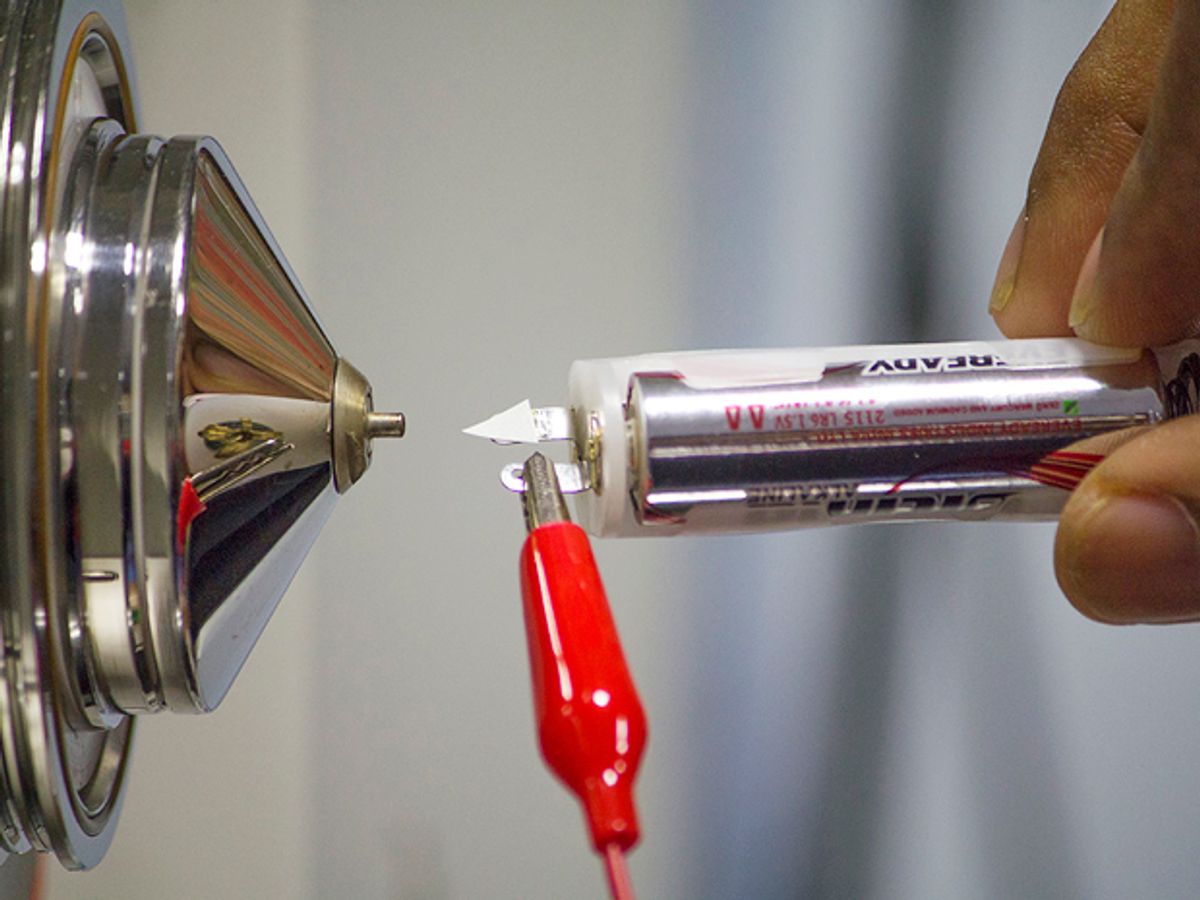Recent research has been relying on nanomaterials to build smaller spectrometers. Late last year, a group at the Technische Universität Dresden and the Fraunhofer Institute in Germany developed a novel, miniature spectrometer, based on metallic nanowires, that was small enough to fit into a mobile phone.
Now researchers at Purdue University have found that adding a coating of carbon nanotubes to a piece of paper holding the sample to be analyzed reduces by 1000 times the voltage required for spectrometers to capture a signal from the sample. This could help reduce the size of spectrometers used in airport security and could eventually push their dimensions down to the size of a Star Trek Tricorder.
"This is a big step in our efforts to create miniature, handheld mass spectrometers for the field," said R. Graham Cooks, a professor of chemistry at Purdue, in a press release. "The dramatic decrease in power required means a reduction in battery size and cost to perform the experiments. The entire system is becoming lighter and cheaper, which brings it that much closer to being viable for easy, widespread use."
In the research, which was published in the journal Angewandte Chemie ("Molecular Ionization from Carbon Nanotube Paper"), the Purdue team collaborated with researchers from the Indian Institute of Technology Madras to leverage a technique known as paper spray ionization in which a sample is captured by wiping an object or placing a drop of liquid on paper wet with a solvent to capture residues from the object's surface.
The new approach that is based on this technique involves using a carbon nanotube-impregnated paper. The nanotube-coated paper is placed on the mass spectrometer using a special attachment, and then applying a small voltage to the paper [see photo]. The nanoscale features on the surface of the paper create high electric fields that make it easier for the spectrometer to get the signals it needs to analyze the chemical composition of the sample.
Thalappil Pradeep, a professor of chemistry at the Indian Institute of Technology Madras, explains that the small voltage (equal to or less than 3 volts) applied to the paper generates a very strong electric field in which 1 volt over a few nanometers creates an electric field equivalent to 10 million volts over a centimeter.
"The trick was to isolate these tiny, nanoscale antennae and keep them from bundling together because individual nanotubes must project out of the paper," said Pradeep in the press release. "The carbon nanotubes work well and can be dispersed in water and applied on suitable substrates."
The researchers are not entirely sure why the technique produces such a clear signal free of background noise, so understanding this mechanism will be part of future research. However, the mere fact that it does have this property could have a number of applications. Initially the most promising will be the reduction in size of mass spectrometers. Maybe a Tricorder-type device isn't really too far away?
Dexter Johnson is a contributing editor at IEEE Spectrum, with a focus on nanotechnology.



